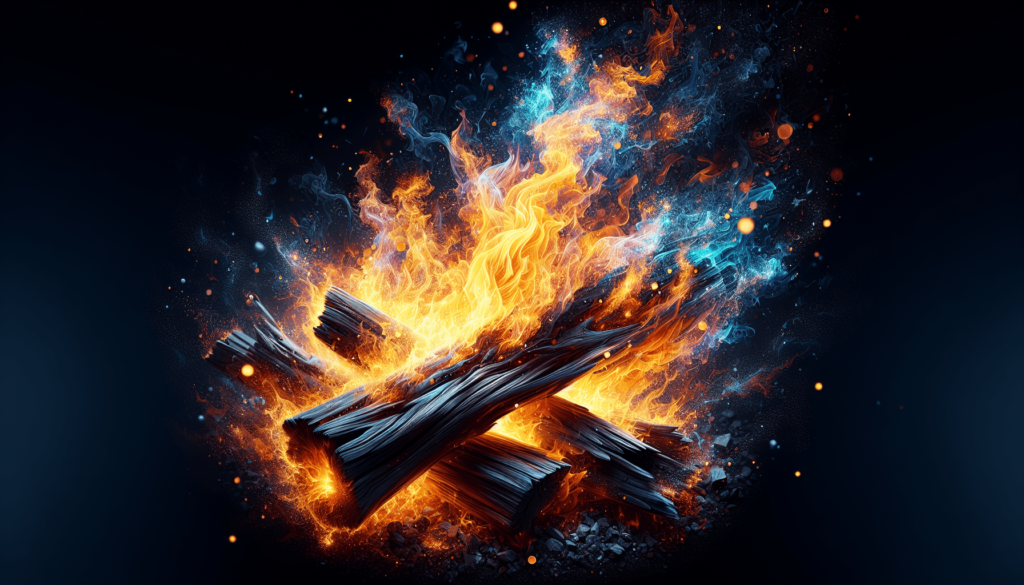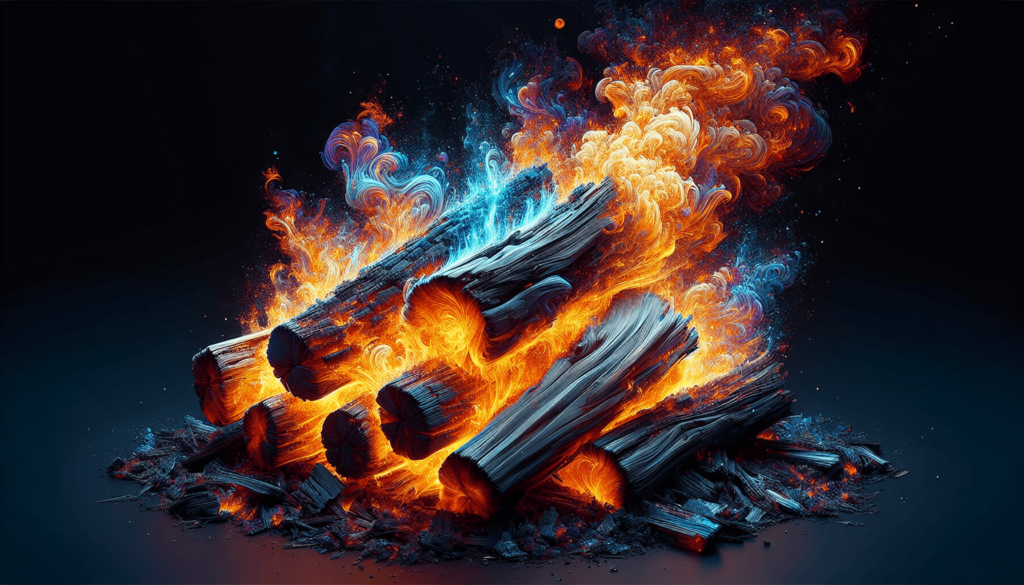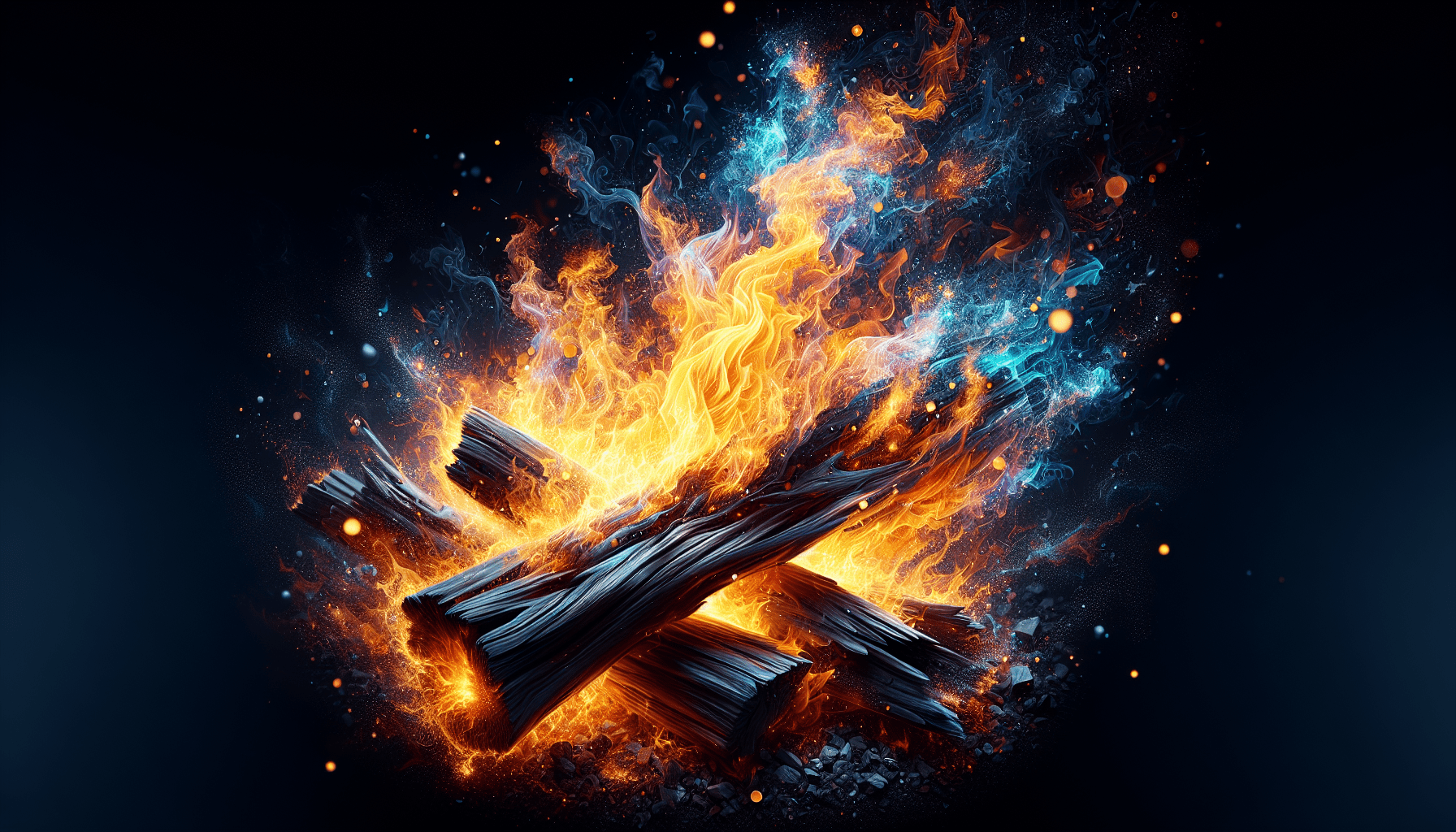When I think about sitting by a campfire, I often wonder what exactly is happening as the wood crackles and burns. In “What Type Of Combustion Is Burning Wood?”, I delve into the fascinating details of this natural process. I explore the science behind how wood combines with oxygen to produce heat and light, unveiling the intricate dance of chemical reactions at play. This article simplifies the complexities of combustion, making it easy to understand whether the fire we so enjoy is a rapid or slow reaction and why it behaves the way it does. What Type Of Combustion Is Burning Wood?
Do you ever find yourself captivated by the flames in a fireplace or a campfire, and then suddenly, a question pops into your head: “What type of combustion is burning wood?” I’ve been there too, sitting by the fire, half lost in the dance of the flames and half inquisitive about their nature. It’s one of those things that seem simple at first but then opens up a whole Pandora’s box of science and curiosity. So, let’s cozy up and dig into it.

Understanding Combustion
Before diving straight into the burning question about wood, we should first get clear on what combustion actually is. Combustion is essentially a chemical process. It’s when a substance reacts with oxygen to produce heat and light. Simple enough, right? Not really. Combustion can be incredibly complex. There are different types, different conditions, and a ton of scientific terminology that can make anyone’s head spin faster than a twirling spark in a bonfire.
Types of Combustion
In broad strokes, combustion can be divided into a few key types: complete, incomplete, spontaneous, and rapid. Let’s take a closer look at each of these.
Complete Combustion
Complete combustion occurs when a fuel completely reacts with oxygen, producing carbon dioxide and water as the only byproducts. It’s the squeaky-clean type of combustion, efficient and waste-free.
| Component | Byproduct |
|---|---|
| Oxygen | Carbon Dioxide (CO2) |
| Fuel (Hydrocarbon) | Water (H2O) |
Incomplete Combustion
Incomplete combustion is the messy cousin of complete combustion. Here, there’s not enough oxygen for the fuel to react completely, producing carbon monoxide, soot, and other pollutants. Imagine incomplete combustion as that friend who promises to clean up after a party but leaves crumbs and half-empty glasses everywhere.
| Component | Byproduct |
|---|---|
| Oxygen (insufficient) | Carbon Monoxide (CO) |
| Fuel (Hydrocarbon) | Soot |
| Partially burnt Fuel |
Spontaneous Combustion
Now here’s an interesting beast. Spontaneous combustion happens without an apparent external ignition source. Under the right (or wrong, depending on your perspective) conditions, materials can oxidize and build up heat internally until they ignite by themselves. Think of those horror stories of haystacks catching fire in the middle of summer. That, my friend, is spontaneous combustion.
Rapid Combustion
This is the kind we’re most familiar with—we see it in our daily lives: lighting a match, starting a car, or, yes, burning wood in a fireplace. Rapid combustion results in heat and light energy being released quickly, often producing flames. It’s like that over-enthusiastic person who just can’t wait and does everything swiftly and energetically.
The Chemistry of Wood Combustion
So, back to the main act: what type of combustion is burning wood? The answer is rapid and incomplete combustion. Of course, that’s only part of the story, and a somewhat reductive part at that. Let’s break it down.
Wood is complex—chemically speaking. It consists of cellulose, hemicellulose, lignin, and various other organic materials. And when it burns, it doesn’t just poof into carbon dioxide and water. There are stages, people!
The Stages of Wood Combustion
-
Drying Phase: At the beginning, the water content in wood starts evaporating. This phase absorbs energy, which is why it’s hard to light damp wood. The temperature rises to about 100°C (212°F).
-
Pyrolysis: Around 200-300°C (392-572°F), wood’s organic material begins to break down into gases (like methane and tar) and solid char. This is known as pyrolysis. The gases escape and can ignite, leading to visible flames.
-
Combustion: The gases produced during pyrolysis react with oxygen—this is where the real action starts—resulting in flames. However, complete combustion is rarely achieved, leading to emissions like soot and ash.
-
Char Combustion: Finally, the solid residue (char) burns slowly at high temperatures, producing various gases and eventually leaving only ash.
Why Incomplete?
Wood combustion is incomplete because there’s rarely ever enough oxygen throughout the mass of the wood to support full combustion. As a result, we get all those pollutants like carbon monoxide and soot. It’s like baking a cake and finding parts of it still gooey inside because the oven didn’t distribute the heat evenly enough.
Factors Affecting Wood Combustion
Several factors affect how wood burns. This is where you get to play fire scientist a bit, observing all the variables and how they tweak the outcome.
Moisture Content
Wood that is wet or has a high moisture content is harder to ignite and produces more smoke. Always opt for seasoned wood (wood that has been dried for at least six months), which has lower moisture content.
Oxygen Availability
The more oxygen, the better the combustion. That’s why bellows work when you try to rekindle a fading fire. More oxygen means more complete burning, resulting in higher temperatures and fewer pollutants.
Type of Wood
Different woods burn differently. Hardwoods like oak and maple burn longer and hotter, while softwoods like pine ignite quickly but burn out faster. Hardwoods tend to produce hotter and cleaner fires, mainly due to their density.
Temperature
Higher combustion temperatures generally produce more complete combustion. This also minimizes the production of pollutants and maximizes heat energy.
| Factor | Result |
|---|---|
| Moisture Content | Difficulty in ignition, more smoke |
| Oxygen Availability | Efficiency in combustion |
| Type of Wood | Duration and intensity of fire |
| Temperature | Completeness of combustion |
Environmental and Health Concerns
Burning wood, while cozy and charming, isn’t without its pitfalls. Even though it is a renewable resource, the byproducts of wood combustion can harm the environment and human health.
Air Quality
Incomplete combustion releases various pollutants, including PM2.5 (fine particulate matter that can penetrate the lungs), carbon monoxide, and volatile organic compounds (VOCs). These pollutants contribute to smog and can exacerbate respiratory conditions.
Greenhouse Gases
Burning wood releases carbon dioxide—a greenhouse gas. Though trees absorb CO2 during their lifetime, burning wood releases it back into the atmosphere, contributing to climate change.
Sustainable Practices
While you can’t eliminate all the pollutants from burning wood, you can certainly minimize them. Using well-seasoned wood and maintaining your fireplace or wood stove can go a long way. Also, there are catalytic converters for wood stoves that can help reduce emissions.

My Personal Fire Pit Saga
On a lighter note, let me tell you about the time I tried to host a romantic outdoor fire pit evening. I had this vision of a perfect night, complete with marshmallows and stargazing. But, of course, the wood I had was as damp as a sponge. As I struggled to light it, acrid smoke billowed around us, causing more coughing than romance. Let’s just say the night ended with a vow to always keep seasoned wood around.
Conclusion
So, there you have it. When wood burns, it undergoes rapid and often incomplete combustion. The fire dances, the wood crackles, and it’s all a symphony of chemistry playing out right before our eyes. Sure, it might seem like a simple act, throwing a log into the fire, but there’s so much more going on—a whole world of science and intrigue.
Next time you find yourself mesmerized by a flickering flame, you can impress your friends or just quietly marvel at understanding the intricate dance of combustion happening before you. Who knew that contemplative moment by the fire could spark such a fascinating journey into the world of combustion?
Fire might be an ancient tool, but the curiosity it fuels? That, my friends, is endlessly modern.

